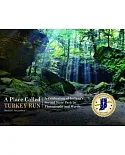The East Coast of North America is a wondrous, intriguing, yet threatened coastline. It zigs and zags for more than 5,500 miles and assumes a multifaceted, jigsaw shape from the Arctic Circle
and Greenland across the Canadian Maritimes, then southward into Maine, Cape Cod, New York Harbor, the Delaware and Chesapeake Bays, along the Outer Banks to Charleston Harbor and on to Cape
Canaveral. It ends at the Dry Tortugas on the western tip of the Florida Keys near the Tropic of Cancer. In this companion book to West Coast: Bering to Baja, David Freese has once again
captured a vast coastal region—one that presently faces a major peril from the rising sea brought about by global climate change and higher temperatures on land and in the ocean.
There are wonderful surprises here. The remote regions of Greenland, northern Quebec, Labrador, and Newfoundland offer breathtaking beauty that many people would not normally associate with the
East Coast. As seen from the air, there are estuaries, fjords, cities, rivers, bays, wildlife refuges, parks, beaches, and islands that create stunning abstract shapes which also reveal their
fragility in the face of the increasing sea-level.
Simon Winchester, always the master storyteller, provides the informative and captivating tale about the geological underpinnings and climatic history of the Atlantic seaboard, including an
ominous view of what lies ahead. Jenna Butler, an award-winning Canadian author, gives a noteworthy commentary on Freese’s photographs, as she places the images in context with the expansive
North American environment and explains the effects and risks of global warming to the populations of Canada and the United States.
East Coast: Arctic to Tropic is the perfect complement to West Coast: Bering to Baja, in which Freese explored the creation and dangers associated with the North American portion of the
Pacific’s Ring of Fire. Together, the books provide a unique photographic and historical record of these two remarkably diverse Atlantic and Pacific Coasts at the very start of a true
land-and-sea change brought about by human use of fossil fuels. In East Coast: Arctic to Tropic, an extraordinary sequence of photographs tells the Atlantic tale and reveals an ocean that lies
in wait.
REVIEWS
“David Freese’s approach to photographing the North American landscape culminates in images that are both new and part of a tradition that can be traced back to that of the American Luminous
tradition on through Western exploratory photography of William Henry Jackson, Timothy O’Sullivan, Carleton Watkins, and Eadweard Muybridge during the nineteenth century. Those classic,
pinpoint-sharp photographs sufficed with light became the source material for artists and lawmakers to preserve and value these landscapes before and after the Civil War. Freese’s vision, like
those of his famous predecessors, connotes an artistic sensibility of hope and loss while inspiring awe and woe.” — William Williams, Professor of Fine Arts and Curator of Photography,
Haverford College
“From Greenland’s glaciers to the industrialized swamps of New Jersey, to the exposed Outer Banks to the Florida Everglades, David Freese reveals a remarkable graphic beauty all along North
America’s ecologically vulnerable East Coast. His delectable images at once entrance us and warn us of the fragility of our coasts in the face of global warming and our human desire to live by
the sea.” — Stephen Perloff, Editor, The Photo Review
“David Freese’s compelling photographs depicting the Atlantic seaboard are both an invaluable historical record of what things look like now as well as a timely wake-up call to how easily
coastal communities everywhere along the East Coast will be affected by a rising sea-level and increased extreme-weather conditions.” — Jolene Hanson, Director, The G2 Gallery, Venice,
California





















